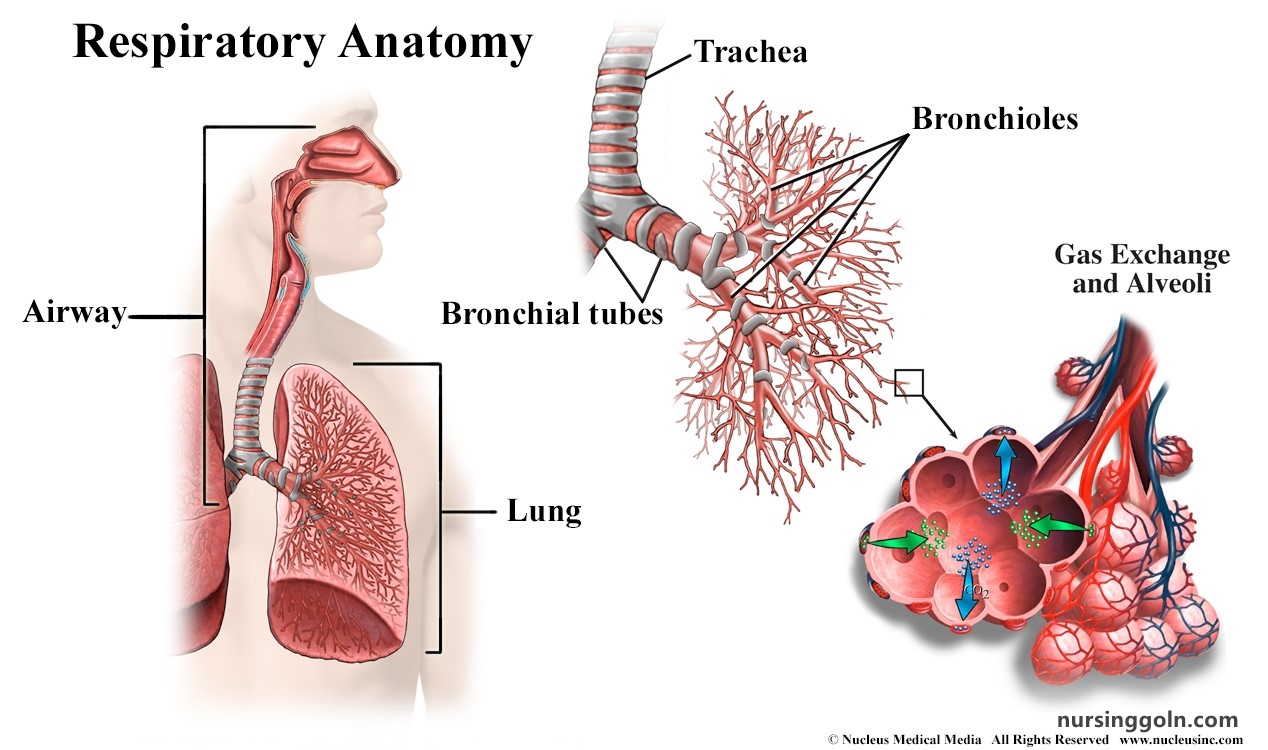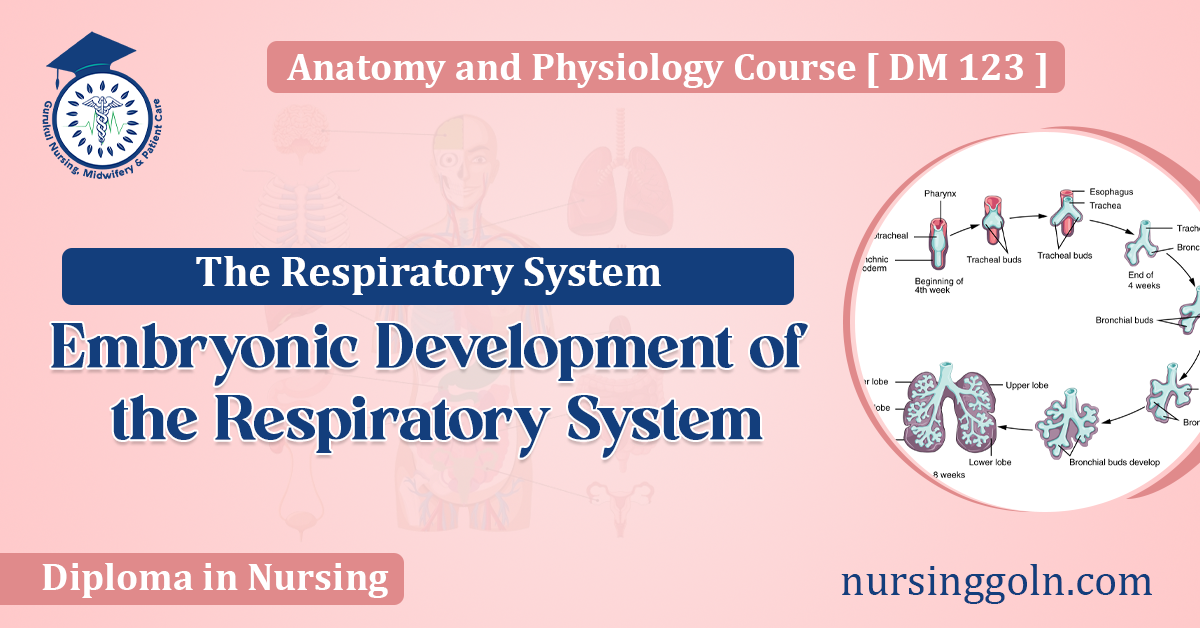Today our topic of discussion is ” Modifications in Respiratory Functions “. The respiratory system, essential for life, is a marvel of intricate design. But how does this complex system come into existence? The journey of the respiratory system starts in the early stages of embryonic development. This article delves into the fascinating journey of how the respiratory system emerges, from the embryonic period to its full maturation, highlighting the intricate process of organogenesis.
Embryonic Development of the Respiratory System: The Respiratory System

1. From Fertilization to Germ Layer Formation
The story of the respiratory system begins at the moment of fertilization when a sperm cell unites with an egg cell to form a zygote. The zygote then undergoes a series of cell divisions, forming a hollow ball of cells called a blastocyst. This blastocyst eventually implants into the uterine wall.
Around the third week of development, the blastocyst undergoes gastrulation, a critical process during which the three primary germ layers are established:
- Ectoderm: The outermost layer, giving rise to the skin, nervous system, and various epithelial structures.
- Mesoderm: The middle layer, forming the musculoskeletal system, circulatory system, and connective tissues.
- Endoderm: The innermost layer, which will eventually give rise to the lining of the digestive and respiratory tracts, as well as various glandular structures.
2. The Respiratory Diverticulum: An Early Breathe of Life
During the fourth week of development, as the embryo elongates and folds, the primitive gut tube forms. Within this gut tube, a small bud called the respiratory diverticulum, also known as the respiratory primordium, emerges. The respiratory diverticulum is the embryonic precursor of the entire respiratory system.

3. Formation of the Laryngotracheal Groove and Lung Buds
Within the fifth week of gestation, the respiratory diverticulum gives rise to the laryngotracheal groove, which is a key landmark in the development of the respiratory system. The groove deepens and eventually becomes a tube known as the laryngotracheal tube.
At the bottom of the laryngotracheal tube, two lung buds develop. These buds will go on to form the lungs and their associated structures. The right and left lung buds will eventually differentiate into the right and left lungs, respectively.
4. Tracheoesophageal Septum: The Breath of Separation
As the respiratory system forms, the tracheoesophageal septum, a partitioning structure, descends to separate the laryngotracheal tube (the precursor of the respiratory system) from the primitive esophagus. This critical development ensures that air and food will be directed to their respective destinations in the future, preventing aspiration of food into the respiratory tract.

5. Lung Bud Branching and Airway Development
Over the subsequent weeks, the lung buds undergo complex branching processes, creating a network of structures that will form the bronchial tree. This process of branching continues well into the fetal period, forming a highly intricate system of airways.
- Primary Bronchi: The first branches that extend from the trachea to each lung bud.
- Secondary Bronchi: These are formed when the primary bronchi divide into two for the left lung and three for the right lung.
- Tertiary Bronchi: Further divisions create even smaller airways.
- Bronchioles: The final branches that lead to the air sacs, called alveoli, where gas exchange occurs.
6. Formation of Alveoli and Pulmonary Vasculature
The development of alveoli, the small air sacs where oxygen is exchanged for carbon dioxide, occurs late in fetal development and continues after birth. The alveolar epithelium and its capillary network create the thin barrier required for efficient gas exchange.
Simultaneously, the pulmonary vasculature, consisting of the pulmonary arteries and veins, forms to carry deoxygenated blood to the lungs for oxygenation.

7. The Role of Surfactant in Respiratory Function
Surfactant is a complex mixture of lipids and proteins that plays a pivotal role in lung development. It is produced by type II alveolar cells in the late stages of fetal development. Surfactant reduces the surface tension within the alveoli, preventing them from collapsing and aiding in lung expansion during each breath.
8. Critical Periods in Lung Development
Lung development is a carefully orchestrated process with specific critical periods:
- Embryonic Period: During this stage, the basic lung structure is formed.
- Pseudoglandular Period: Here, lung branching and airway formation occurs.
- Canalicular Period: The development of the alveolar ducts and terminal sacs, along with the appearance of the first capillaries in the saccular walls, takes place.

- Saccular Period: The formation of mature alveoli continues, and surfactant production intensifies.
- Alveolar Period: The final stage of lung development, which extends into the postnatal period, sees the continued formation of alveoli and further maturation of the respiratory system.
9. The Transition to Extrauterine Life
The moment of birthmarks a profound transition for the respiratory system. The first breath taken by the newborn is a monumental step in the maturation of the lungs. The initiation of air breathing triggers several key changes:
- Closure of Fetal Shunts: Intrauterine, certain structures like the ductus arteriosus and foramen ovale allow blood to bypass the pulmonary circulation. After birth, these shunts close, ensuring that blood flows through the lungs for oxygenation.
- Lung Expansion: With the first breath, the newborn’s lungs inflate. This expansion, combined with the presence of surfactant, keeps the alveoli from collapsing and facilitates gas exchange.

10. Respiratory Challenges in Premature Birth
Premature infants, born before the completion of lung development, face significant respiratory challenges. Their underdeveloped lungs may lack sufficient surfactant, making breathing difficult and increasing the risk of respiratory distress syndrome (RDS). Medical interventions, such as surfactant replacement therapy and mechanical ventilation, help support the respiratory function of premature infants.
11. The Aging Respiratory System
As a person ages, changes occur in the respiratory system as well. These changes can include a reduction in lung capacity, diminished elastic recoil, and a decline in respiratory muscle strength. These age-related modifications can influence an individual’s overall respiratory health and function.

The embryonic development of the respiratory system is a testament to the intricate orchestration of biological processes. From the emergence of the respiratory diverticulum to the maturation of alveoli, each stage is vital for the establishment of a functional respiratory system. Understanding these developmental processes not only provides insight into the complexity of life but also highlights the importance of prenatal and neonatal care in ensuring the health of the respiratory system.
